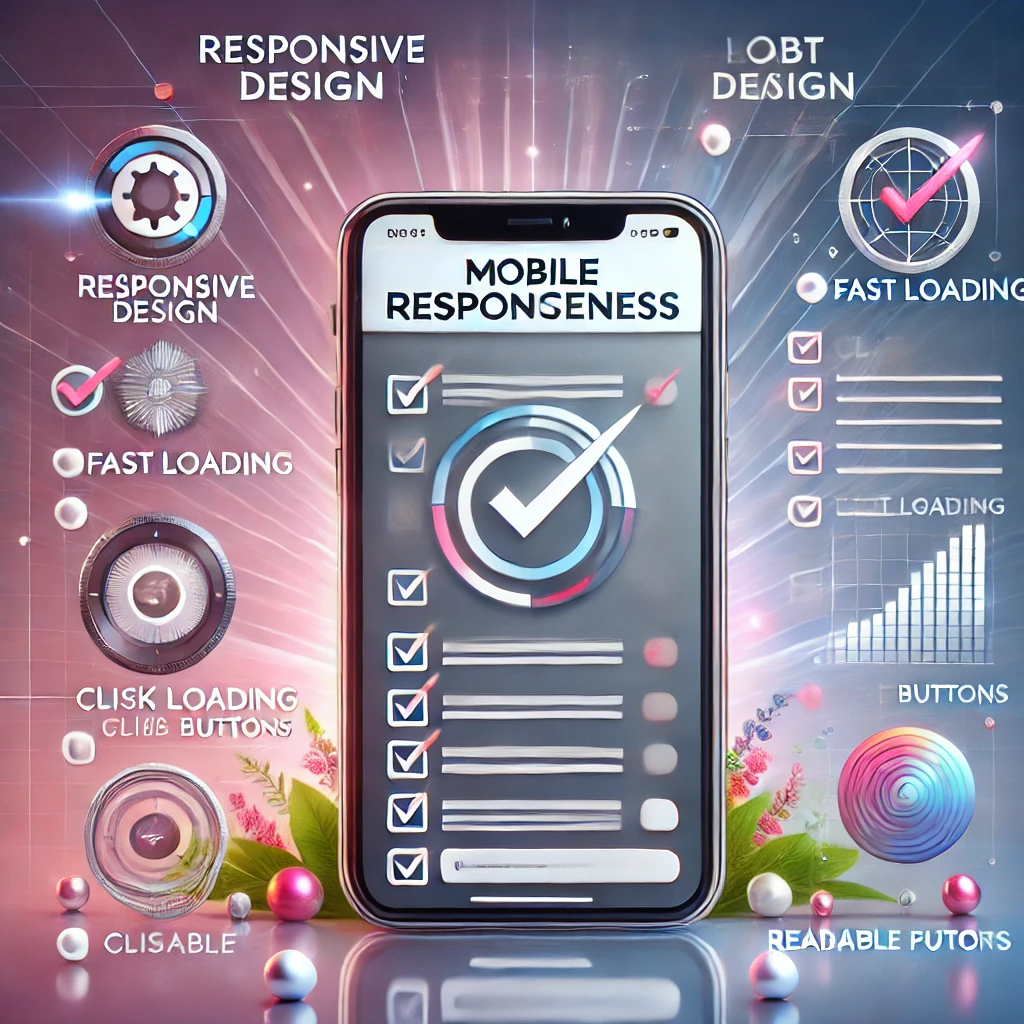In today’s mobile-first world, a website that isn’t optimized for smaller screens is a missed opportunity. A poorly designed mobile site can lead to a frustrating user experience, higher bounce rates, and lower conversion rates. To ensure your website delivers a seamless experience across all devices, consider the following checklist:
Core Principles of Mobile Responsiveness
- Fluid Grid Layout: Your website’s layout should adapt gracefully to different screen sizes.
- Responsive Images: Images should adjust their size and resolution to fit the device’s screen.
- Touch-Friendly Design: Elements should be easy to tap and interact with on touchscreens.
- Fast Loading Times: Optimize images, minimize HTTP requests, and leverage browser caching.
- Readability: Text should be clear and easy to read on smaller screens.
Key Checklist Items
- Viewport Meta Tag:
- Ensure the viewport meta tag is present and set correctly to control the page’s layout and dimensions.
- Flexible Images:
- Use responsive images with
srcsetandsizesattributes to deliver the optimal image for each device. - Compress images to reduce file size without compromising quality.
- Use responsive images with
- Touch-Friendly Elements:
- Make buttons and links large enough to be easily tapped.
- Avoid small touch targets that can be difficult to interact with.
- Consider using larger font sizes for better readability on smaller screens.
- Optimized Loading Times:
- Minify CSS and JavaScript files.
- Reduce HTTP requests by combining files.
- Leverage browser caching to store static assets locally.
- Clear and Concise Content:
- Prioritize essential content and avoid clutter.
- Use clear and concise language.
- Break up long paragraphs into smaller chunks.
- Testing Across Devices:
- Test your website on a variety of devices and screen sizes.
- Use browser developer tools to simulate different screen resolutions and orientations.
- Consider using real-device testing services for accurate results.
Additional Tips
- Use a Responsive Framework: Frameworks like Bootstrap and Foundation can help you build responsive websites more efficiently.
- Test Your Website’s Performance: Use tools like Google PageSpeed Insights to identify performance bottlenecks.
- Consider a Mobile-First Design Approach: Design for mobile devices first and then adapt the design for larger screens.
- Prioritize Content Hierarchy: Organize content in a logical and easy-to-navigate structure.
- Stay Up-to-Date with Web Standards: Keep up with the latest web standards and best practices.
By following these guidelines, you can ensure that your website provides a seamless and enjoyable experience for all users, regardless of the device they’re using.
